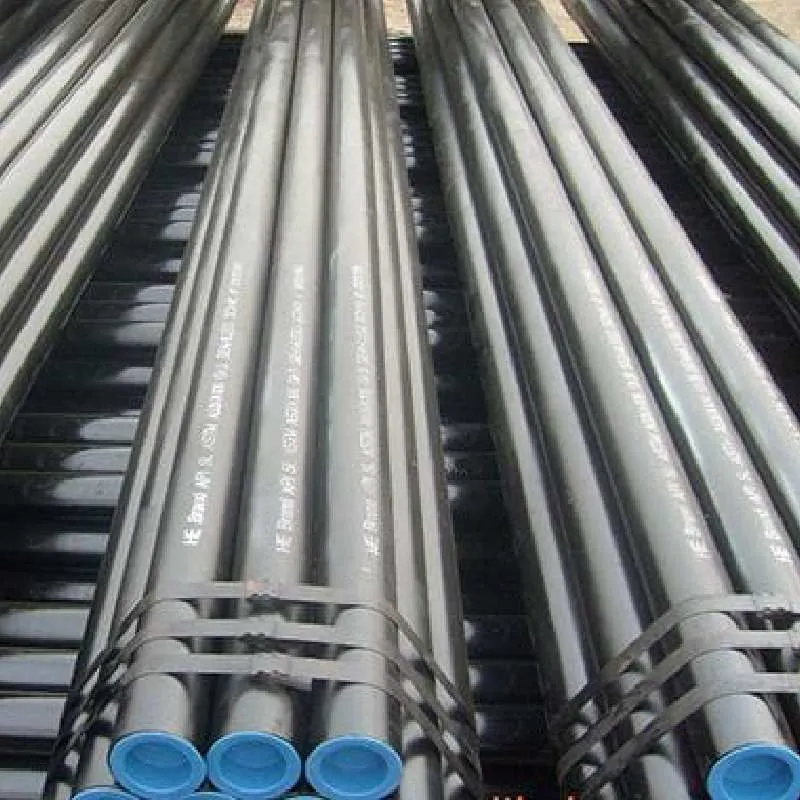Current location:
110mm pipe cap
Date:2025-08-16 06:18:42 Read(143)

Understanding EN 1092-1 PN 40 A Comprehensive Overview The EN 1092-1 standard is a critical reference in the realm of flange design and manufacturing, particularly within the European Union. This standard outlines diverse types of flanges, focusing on their dimensions, tolerances, mechanical properties, and pressure-temperature ratings. Among the various pressure classes defined in this standard, PN 40 is particularly significant, denoting flanges that can safely endure a maximum pressure of 40 bar at a designated temperature. What is PN 40? The PN in PN 40 stands for Pressure Nominal, which indicates the nominal pressure rating of the flange. Specifically, a PN 40 flange is designed for high-pressure applications and is commonly utilized in industries such as oil and gas, chemical processing, and power generation. The numerical value represents the maximum allowable pressure in bar, equating to approximately 580 psi. This classification is essential for engineers and designers as it determines the suitable applications and safety margins for various systems. Key Features of EN 1092-1 PN 40 Flanges 1. Material Selection EN 1092-1 flanges can be manufactured from various materials, including carbon steel, stainless steel, and alloy steels. The choice of material impacts the flange's corrosion resistance, strength, and compatibility with different fluids. 2. Dimensions and Ratings The standard provides detailed specifications regarding the dimensions of PN 40 flanges, including bolt hole diameters, flange thickness, and outer diameters. Understanding these measurements is crucial for ensuring proper fit and function in piping systems. 3. Bolt Pattern Flanges adhering to the EN 1092-1 PN 40 standard come with specific bolt patterns to facilitate easy connections. These patterns must align with those of the corresponding flanges in the system to ensure secure assembly. en1092 1 pn40 4. Surface Finish The standard also dictates surface roughness, ensuring that the flanges can form effective seals with gaskets. A smooth surface finish reduces the chance of leaks and enhances the reliability of the connection. 5. Testing and Certification Flanges manufactured according to EN 1092-1 PN 40 must undergo rigorous testing to verify their pressure rating and mechanical properties. Proper certification and documentation are essential for compliance with safety standards and regulations. Applications of PN 40 Flanges PN 40 flanges are predominant in high-pressure environments. They are commonly found in - Chemical Processing Plants Where reactive substances are present, robust flanges ensure safety under high pressure. - Power Generation Stations High-pressure steam applications frequently use PN 40 flanges to connect piping systems that carry steam and other fluids. - Oil and Gas Industries Where high-pressure pipelines transport crude oil, gas, and refined products, PN 40 flanges play a vital role in ensuring the integrity of these systems. Conclusion The EN 1092-1 PN 40 standard represents a vital aspect of flange design, offering specifications that ensure safety and performance in high-pressure applications. Understanding its features, applications, and the importance of proper material selection and testing is essential for engineers and manufacturers. As industries demand more robust and reliable components, adherence to standards like EN 1092-1 becomes increasingly essential in maintaining efficiency and safety in piping systems across various sectors. Knowing the nuances of PN 40 flanges empowers professionals to make informed decisions that ultimately enhance the integrity and safety of their operations.
Share:
Previous: Coude 90 degrés 4 pouces - Raccords de plomberie de haute qualité
Next: Exploring the Benefits and Uses of 2% 20 Galvanized Pipe in Various Applications
Kind tips:The above content and pictures are compiled from the Internet and are for reference only. I hope they will be helpful to you! If there is any infringement, please contact us to delete it!
You may also like
- Comparison of Seam and Seamless Pipes in Industrial Applications and Their Key Differences
- Choosing the Right 3% 208% 45 Degree Elbow for Efficient Piping Solutions
- Exploring the Benefits of 1% 3% 8% Galvanized Pipe in Construction Industries
- flange blank plate
- Discover the benefits of using a 4% threaded pipe cap for all your plumbing needs. Explore its appli
- Exploring the Efficiency and Applications of Medium Head Heavy Duty Slurry Pumps in Industry
- EN 1092-12005 Standard Overview for Flange Dimensions and Pressure Ratings
- Exploring the Applications and Benefits of 20mm Metal Pipes in Construction and Industry
- Exploring the Benefits and Applications of Die Casting in Modern Manufacturing Processes